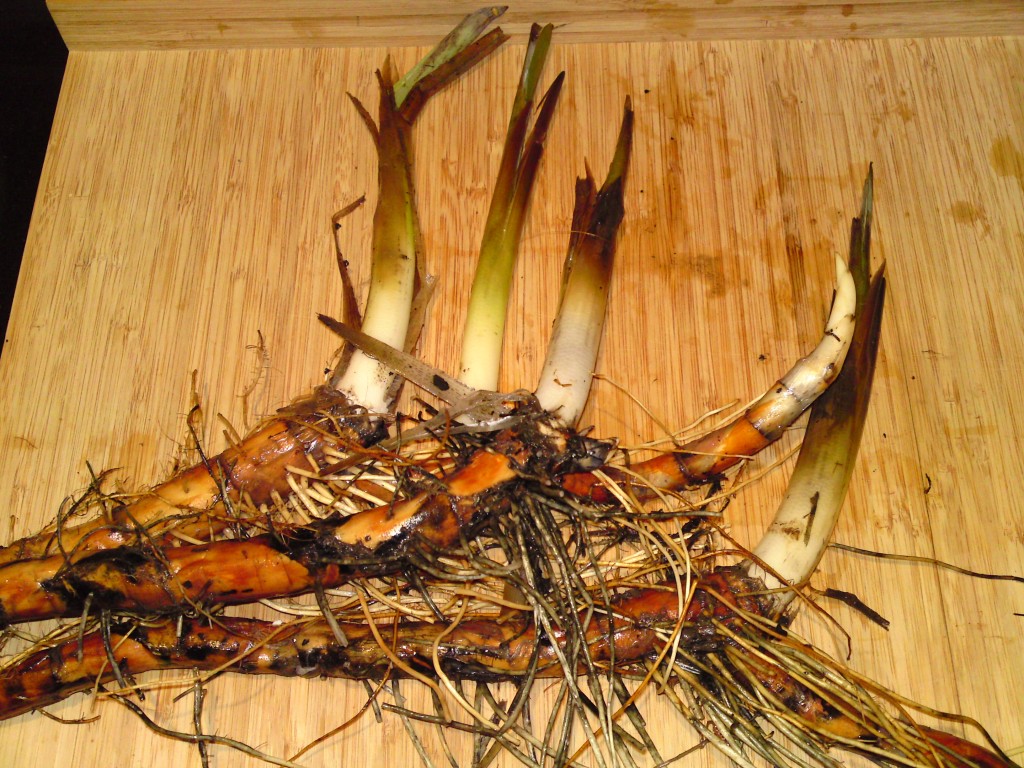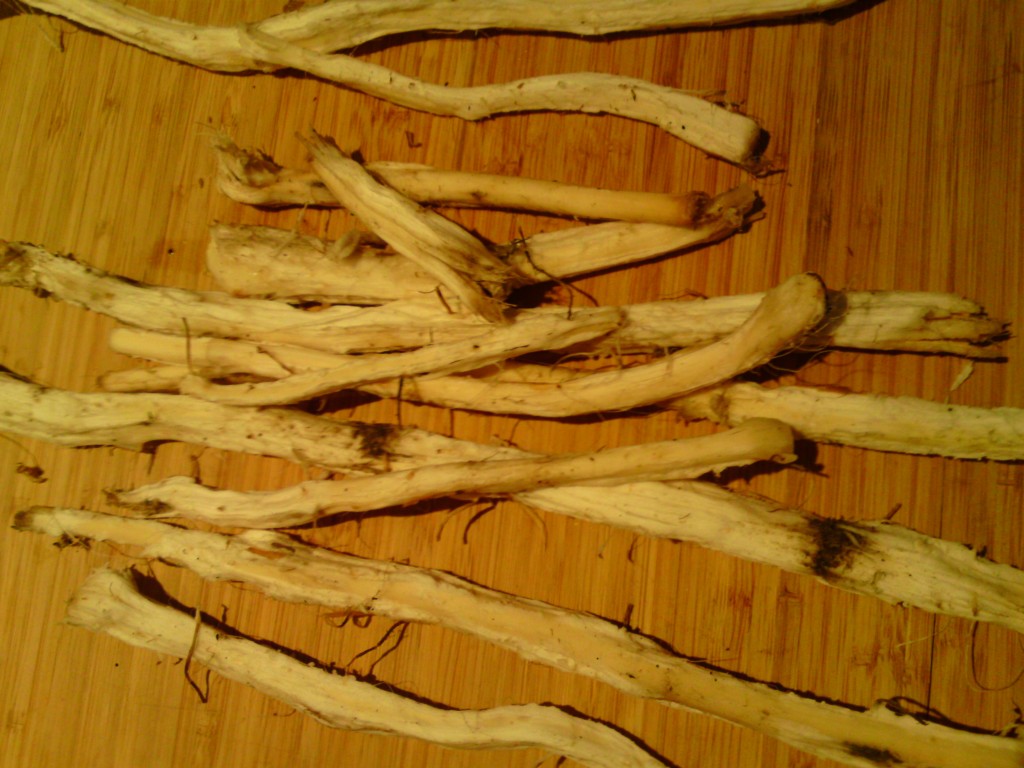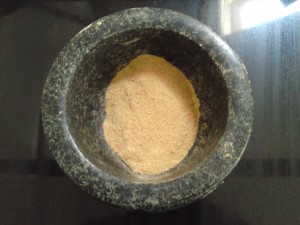Reedmace flour
Get in touch with your roots!
See my post on Reedmace to learn more about identification, distribution and uses of this great wild food.
Making flour from reedmace rhizomes and other roots and tubers is an activity that has being going on for millenia. Mesolithic hunter-gatherers would have used similar processes to those still used by aborigines today. The process is one of capturing and preserving starch in a digestible form. Have a go and get back to your roots!
When you have gathered your rhizomes give them a good wash and peel them. Next give them a good pounding to unlock their starches then add plenty of water and allow to steep for a couple of days. Next, strain out the solids through a coarse sieve and allow to settle again before skimming off the remaining water to leave you with a runny paste. Spread this out in a shallow dish and leave in an airing cupboard, dehydrator or low oven until it is completely dry. Crumble this to a dry powder and pass through a fine sieve.
The resulting powder can be used like corn flour to thicken soups and stews. I use it as a super-light and easy to rehydrate source of carbohydrate when backpacking.



2 Comments
Hi I watched a French baker making a type of flat bread on Sunday morning bites today,, before baking he coated th dough in..mace flour to get a nice crunch,have looked on internet but unable to find mace flour,any ideas
I would really appreciate any help
Thanks mike
Hi Mike, Mace is made by drying the lacy, red outer coating that covers the shell around the nutmeg kernel. Its a spice often employed in baking, somewhat out of fashion now though. It is usually used by infusing the “blades”, so perhaps your man had ground these up? Try wood avens root for a UK wild harvest that’s in the same ball-park.
cheers,
Mark